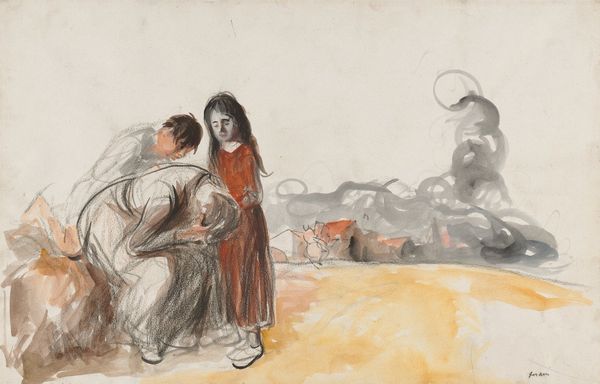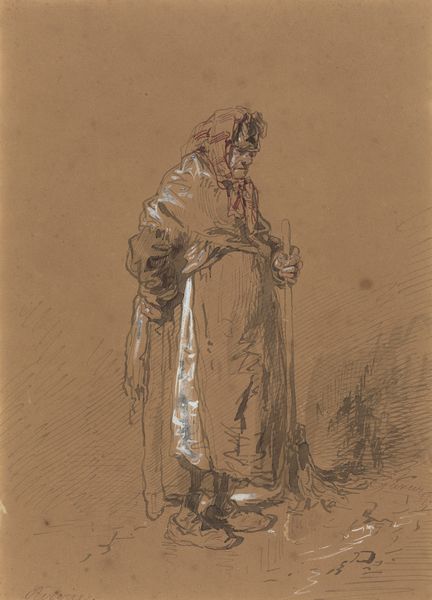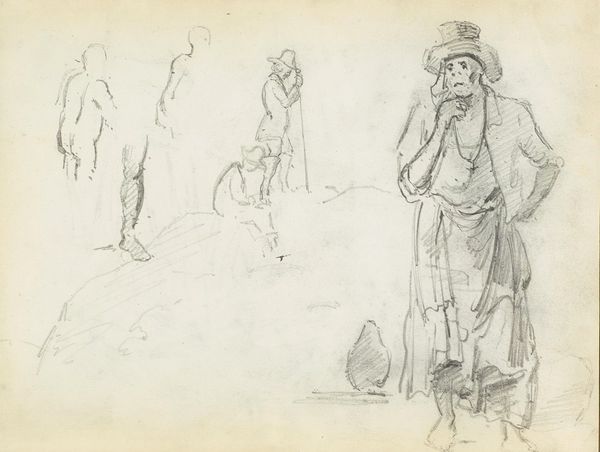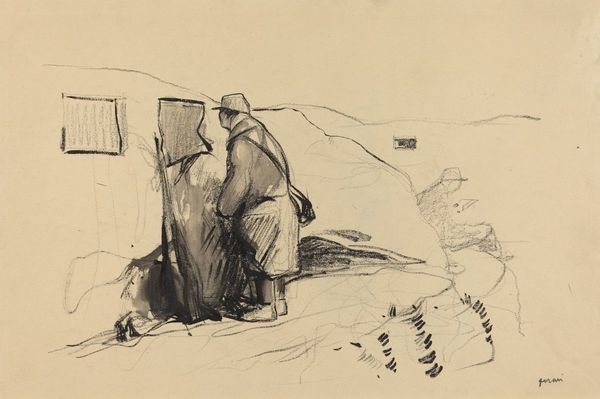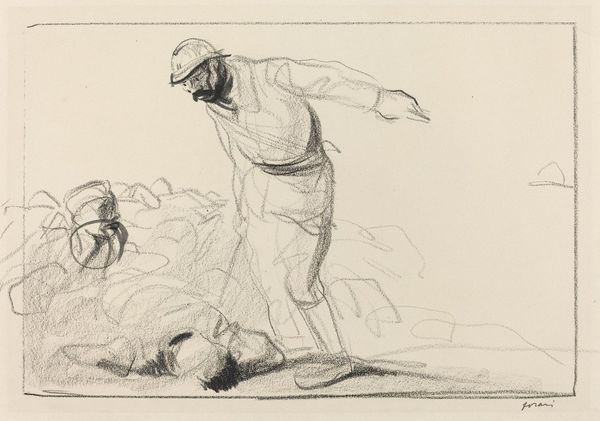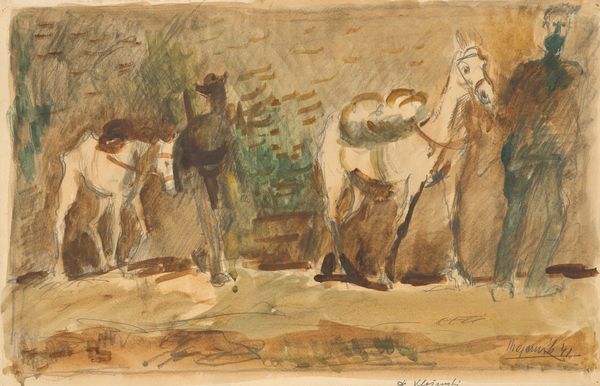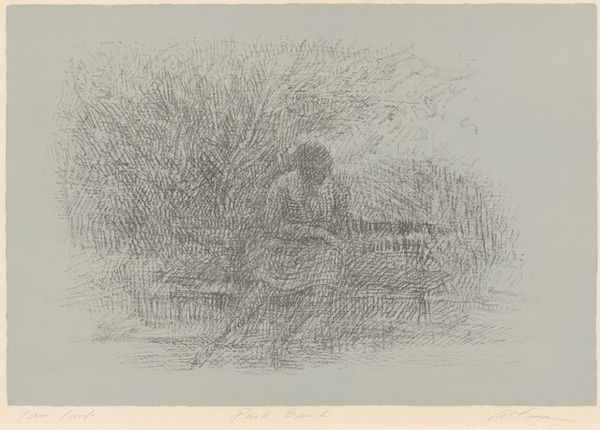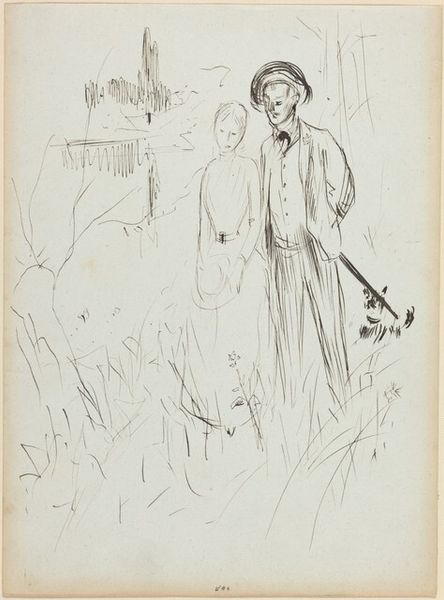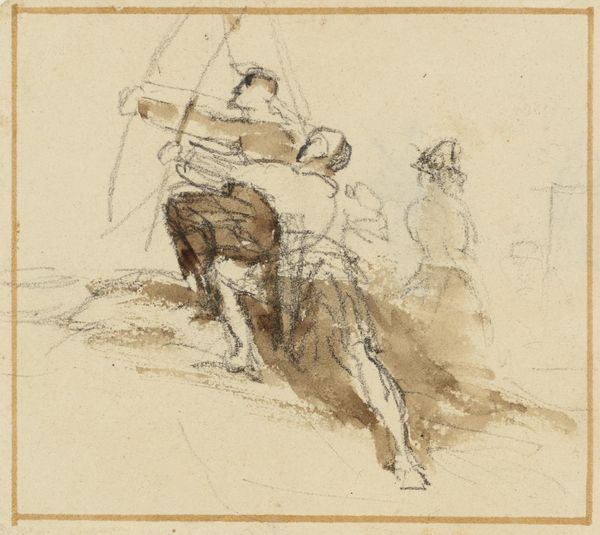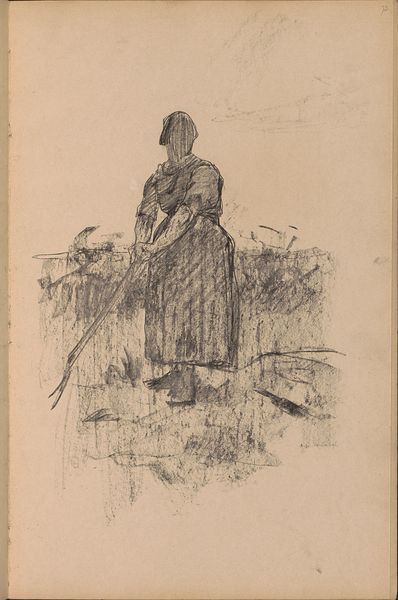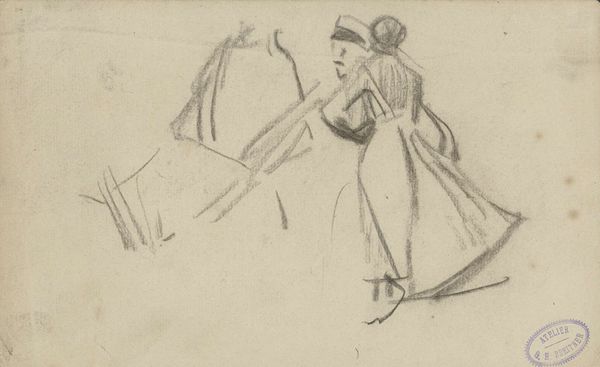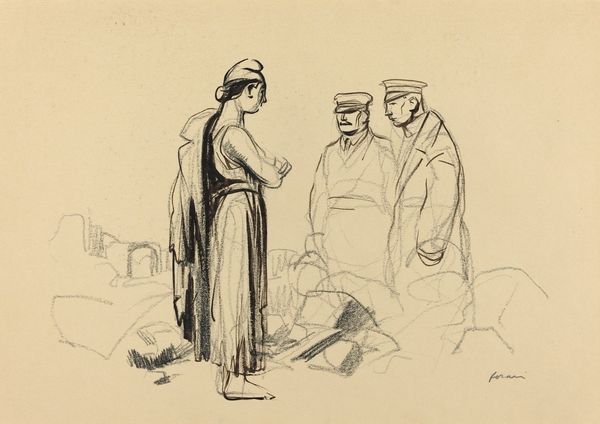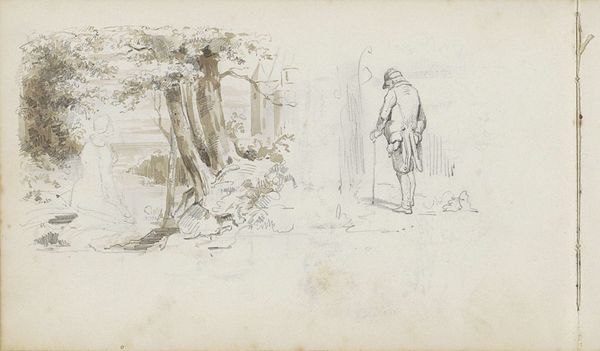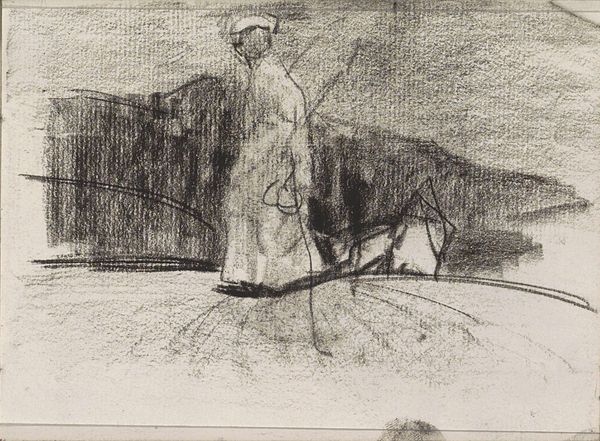
Copyright: Public Domain: Artvee
Curator: Look at this poignant work on paper by Jean-Louis Forain, likely created between 1914 and 1919. The title is "Les Allemandes sont partis," or "The Germans Have Left." It's a mixed-media work combining pencil and watercolor. Editor: Oh, wow. Stark and mournful are the first words that come to mind. There's such a desolate feeling. A landscape sketched in grief. It is also beautiful and affecting. Curator: Precisely. Note how Forain employs a rather subdued palette and a composition where emptiness seems to be as important as what is depicted. The slumping posture of the woman hints at defeat and despair. We are shown one standing women, maybe a child beside her and indistinct shapes. Do these signify the women’s loss, what they had experienced? Editor: And yet, within that bleakness, there’s a strength, a resilience in the figure of the woman that transcends the sorrow. The strong, resolute stance. Or maybe the figure appears on the horizon to show something akin to “survivors guilt” and mourning and even PTSD in one still figure. The line quality is interesting too—it has this urgent, sketched feel that puts you right there in the aftermath. The emptiness creates this powerful void. Curator: Indeed. Forain was deeply affected by the First World War, and this drawing, in many ways, encapsulates the atmosphere of post-war France: a nation picking up the pieces, grappling with trauma. He suggests all of that through minimal details – a few lines and washes of color. Editor: The Germans have left but… the grief remains. The absence screams louder than any battlefield depiction ever could. You wonder who she is grieving. All those suggested outlines give one the impression of not necessarily only one figure, but a series of apparitions surrounding this character, creating the effect of psychological echoes and layers, giving greater pathos to the picture. I find this particularly effective, don’t you think? Curator: I do. The simplicity here really amplifies the psychological weight of the scene. It shows, with incredible poignancy, what can be conveyed with so little. The minimal color adds to this as well. It underscores a collective state of grief that endures long after conflict ends. Editor: Exactly. You're left contemplating what remains once the visible scars fade—the quiet, persistent ache in the human heart, and collective mind.
Comments
No comments
Be the first to comment and join the conversation on the ultimate creative platform.
